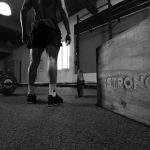Face pulls are an excellent exercise for the upper back muscles, rear deltoids, and trapezius. They are also great for building strong shoulders, improving posture, and preventing injuries. In this article, we will discuss everything you need to know about the face pull, including their benefits, how to perform them correctly, and common mistakes to avoid.
If you’re looking for an exercise that targets multiple muscle groups and improves your overall fitness, face pulls are a great option. They are a simple exercise that can be performed with a cable machine or resistance bands, making them accessible to everyone. Whether you’re a beginner or an experienced lifter, face pulls can help you achieve your fitness goals.
Key Takeaways
- Face pulls are an excellent exercise for building strong shoulders, improving posture, and preventing injuries.
- They target multiple muscle groups, including the upper back muscles, rear deltoids, and trapezius.
- To perform face pulls correctly, focus on keeping your shoulders back and down, pulling the weight towards your face, and squeezing your shoulder blades together.
What is a Face Pull?
Face pulls are an exercise that targets the posterior deltoids of the shoulder, which are often neglected by other shoulder exercises. This exercise is an effective way to strengthen and isolate the muscles of the upper back, including the lower traps, rear delts, and rotator cuff.
The face pull is an intermediate-level exercise that can be performed with a cable pulley machine or resistance bands. This exercise involves pulling the weight straight towards your forehead, with your elbows out to the side and your hands positioned in a neutral grip.
One of the benefits of the face pull is that it can help support the shoulder joints thanks to the extra rotator cuff work it entails. Additionally, face pulls can help improve posture and reduce the risk of injury by strengthening the muscles of the upper back.
When performing a face pull, it’s important to focus on feeling the movement and not to stack too much weight on the cable machine. This exercise doesn’t require a lot of weight to be effective, and it’s important to maintain proper form throughout the movement.
Overall, face pulls are an effective exercise for targeting the posterior deltoids and strengthening the muscles of the upper back. Incorporating face pulls into your workout routine can help improve shoulder health, posture, and overall strength.
Benefits of Doing a Face Pull
Face pulls are an effective exercise that can provide several benefits to our shoulder and upper back muscles. Here are some of the benefits of face pulls:
- Shoulder Health: Face pulls are a great exercise for improving shoulder health. They target the posterior deltoids, which are often neglected by other shoulder exercises. By working the posterior deltoids, we can improve our shoulder joint’s stability, mobility, and strength.
- Rotator Cuff Strength: Face pulls are also great for strengthening the rotator cuff muscles, which are essential for maintaining shoulder joint health. The rotator cuff muscles help stabilize the shoulder joint and prevent injuries.
- Shoulder Stability: Face pulls can improve shoulder stability by working the muscles that support the shoulder joint. Strong shoulder muscles can prevent shoulder injuries and improve our ability to perform various exercises.
- Upper Back Strength: Face pulls work the upper back muscles, including the lower traps and rhomboids. Strengthening these muscles can improve posture and reduce the risk of back pain.
- Muscle Imbalances: Face pulls can help correct muscle imbalances by targeting the muscles that are often neglected in other exercises. By working the posterior deltoids and upper back muscles, we can balance out our shoulder and back muscles, reducing the risk of injury.
In conclusion, face pulls are a great exercise that can provide several benefits to our shoulder and upper back muscles. By incorporating face pulls into our workout routine, we can improve our shoulder health, strengthen the rotator cuff muscles, improve shoulder stability, and enhance our upper back strength.
How to Perform a Face Pull
Form and Stance
To perform face pulls, we should begin by standing in an athletic stance with our feet shoulder-width apart and our knees slightly bent. Next, we should set up the cable pulley machine so that the pulley system is positioned slightly above our head.
Use the rope attachment that features two hand-holds for this exercise. We should reach up and grasp the handles with both hands with our palms facing in. We should step back until our arms are fully extended, then engage our core and lean back slightly.
Keep your elbows high and wide, and our thumbs up throughout the exercise. We should also maintain a stable posture and avoid swinging our body to generate momentum.
Equipment and Resistance
We can perform face pulls with different types of equipment, such as resistance bands, dumbbells, or cable machines. The resistance should be challenging but manageable, allowing us to perform 10-15 reps per set.
Regarding cable face pulls, we can adjust the weight stack to our preferred resistance level. For resistance band face pulls, we can choose a band with appropriate tension. As for dumbbell face pulls, we can use a weight that allows us to maintain proper form and control.
Pulling and Scap Mobility
To perform face pulls, we should initiate the movement by pulling the rope towards our face while retracting our scapulae. Focus on squeezing our upper back muscles, such as the rhomboids and middle trapezius.
Avoid pulling with our biceps or using our neck to compensate. We should also avoid arching our lower back or flaring our ribs.
By performing face pulls regularly, we can improve our scapular mobility and stability, which can benefit our posture, shoulder health, and overall upper body strength.
Variations of the Face Pull
When it comes to face pulls, there are several variations that you can try to target your rear deltoids and other muscles in your upper back. Here are three variations that you can try:
Standing Face Pull
Standing face pulls are a great way to work your rear deltoids and other upper back muscles. To do this exercise, you will need a cable machine with a rope attachment. Here’s how to do it:
- Stand facing the cable machine with your feet shoulder-width apart.
- Grab the rope attachment with an overhand grip.
- Pull the rope towards your face, keeping your elbows high and your shoulders down.
- Pause for a moment at the end of the movement, then slowly release the rope back to the starting position.
We recommend doing two sets of 20 reps for this exercise.
Cable Face Pull
Cable face pulls are another great variation of the face pull. This exercise is similar to standing face pulls, but you will be using a different attachment on the cable machine. Here’s how to do it:
- Attach a rope or a straight bar to the cable machine.
- Stand facing the machine and grab the attachment with an overhand grip.
- Pull the attachment towards your face, keeping your elbows high and your shoulders down.
- Pause for a moment at the end of the movement, then slowly release the attachment back to the starting position.
We recommend doing two sets of 20 reps for this exercise.
Resistance Band Face Pull
Resistance band face pulls are a great way to do face pulls at home or on the go. All you need is a resistance band and a sturdy anchor point. Here’s how to do it:
- Attach the resistance band to a sturdy anchor point at face level.
- Stand facing the anchor point and grab the resistance band with an overhand grip.
- Pull the band towards your face, keeping your elbows high and your shoulders down.
- Pause for a moment at the end of the movement, then slowly release the band back to the starting position.
We recommend doing two sets of 20 reps for this exercise.
Overall, face pulls are an isolation exercise that can help you target your rear deltoids and other muscles in your upper back. They are a great complement to compound exercises like the overhead press and bench presses. Try these variations to keep your workouts interesting and challenging.
Common Mistakes to Avoid
When performing face pulls, there are some common mistakes that we should avoid to prevent injury and maximize our gains. Here are some of the most common mistakes to look out for:
Using Too Much Weight
One of the most common mistakes people make when doing face pulls is using too much weight. Using too much weight can cause us to sacrifice proper form and technique, which can lead to injury. Instead, we should focus on using a weight that allows us to perform the exercise with proper form and without swinging or jerking the weight.
Poor Form and Technique
Another common mistake is poor form and technique. When performing face pulls, it’s important to maintain proper form and technique throughout the exercise. This means keeping our shoulders down and back, elbows high, and pulling the weight towards our face rather than our chest or neck. We should also avoid swinging or jerking the weight, as this can cause injury.
Neglecting Safety
Safety is also an important consideration when performing face pulls. We should always make sure that the cable pulley machine is set up correctly and that the weight is secure before starting the exercise. We should also avoid using too much weight or performing the exercise too quickly, as this can increase the risk of injury.
Not Seeking Professional Help
If we’re new to face pulls or strength training in general, it’s a good idea to seek the help of a personal trainer. A personal trainer can help us learn proper form and technique, tailor our workouts to our specific needs and goals, and prevent injury.
In summary, when performing face pulls, it’s important to avoid common mistakes such as using too much weight, poor form and technique, neglecting safety, and not seeking professional help. By following these tips, we can maximize our gains and prevent injury.
Frequently Asked Questions
What are the benefits of doing face pulls?
Face pulls are a great exercise for strengthening the muscles of the shoulders and upper back, including the lower traps, rear delts, and rotator cuff. They can also help improve posture, prevent shoulder injuries, and increase shoulder mobility.
How do face pulls help improve posture?
Face pulls target the muscles that help retract the shoulder blades, which can improve posture by pulling the shoulders back and down. This can help counteract the effects of sitting at a desk or computer for extended periods.
Can face pulls help prevent shoulder injuries?
Yes, face pulls can help prevent shoulder injuries by strengthening the rotator cuff muscles and improving shoulder mobility. Strong rotator cuff muscles can help stabilize the shoulder joint and reduce the risk of injury.
What variations of face pulls can be done?
There are several variations of face pulls that can be done, including using different grips, adjusting the cable height, and adding resistance bands. Some variations can target different areas of the shoulder and upper back muscles.
Are face pulls suitable for beginners?
Yes, face pulls can be suitable for beginners, but it’s important to start with lighter weights and focus on proper form to avoid injury. It’s also recommended to work with a trainer or coach to ensure proper technique.
What equipment is needed to perform face pulls?
Face pulls can be performed with a cable machine, resistance bands, or even just a towel. The key is to have a stable anchor point and a weight or resistance that can be adjusted to your fitness level.
Other Posts You May Enjoy!
- “Get Your Back into Shape: The Ultimate Back Exercises Guide for Building a Stronger, Defined Back”

- Building Strong Shoulders: Shoulder Workouts to Strengthen Your Shoulder Muscles

- “Say Goodbye to Lower Back Pain: The Ultimate Path To a Healthy Spine”

- “Master the Pendlay Row: The Ultimate Guide to Building a Stronger Back and Bigger Muscles”

- “Fly Like a Superhero: The Ultimate Guide on Why the Reverse Fly Should Be in Your Workout Routine”

EXPAND YOUR MIND
Join the best newsletter that you never knew you needed. You’ll get emails containing grooming tips, new blog posts, product launches, giveaways, and motivation to help you Keep on Keeping on.



